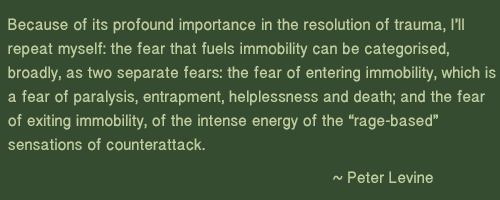People don’t often think about improving their emotional health until they encounter a crisis. But we can learn to be more emotionally healthy before we run into serious trouble. I’ve heard countless “experts” talk about anger, fear, shame, guilt and the like as “negative”, “destructive” and “unhealthy” emotions. I absolutely cringe when I read/hear that because it is just not true. The issue is not the emotions themselves, but in how we handle them. And many of us just don’t handle anger or fear very well. I think people have huge issues with anger and fear in particular. Many people are described as “angry people” or “fearful people”, as if those terms described a person in absolute terms. I believe the people who have the real issues are the ones who label others like this. If we haven’t made friends with our own difficult emotions, we’ll shun and shame them in others.
There are such things as healthy anger, healthy fear and healthy shame. Polarising our emotions into positive and negative does not make us emotionally literate or intelligent, it has the exact opposite effect in fact. When we disown, deny, bury, suppress or repress our emotions, we’re not using them for what they were intended to be used for; action requiring neurological programmes, according to neuroscientist, Antonio Damasio.
Emotions are not meant to remain stagnant, they are meant to move. In human terms that means we need to feel our emotions, they come and they go when we see every one of them as healthy and necessary when the need arises. If your boundaries are being transgressed for example, anger will arise, in order for you to define your boundaries properly so you are protected. If you’ve been taught that it’s “bad” for you to feel and/or express anger, it will be hard for you to define healthy boundaries, so you’ll often feel picked on or put upon. Ironically the person you’ll feel most angry with in this situation is yourself. You pay a high price for not being who you truly are. Even if the world has tried to change us, or has even succeeded to a certain degree, we’ll always feel the call to be true to ourselves. Living a lie is far worse than losing some people who weren’t ready for who we really are.




















